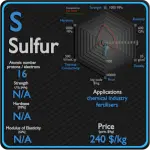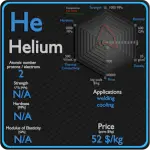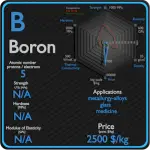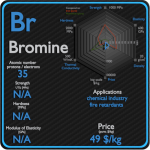This article contains comparison of key thermal and atomic properties of oxygen and magnesium, two comparable chemical elements from the periodic table. It also contains basic descriptions and applications of both elements. Oxygen vs Magnesium.
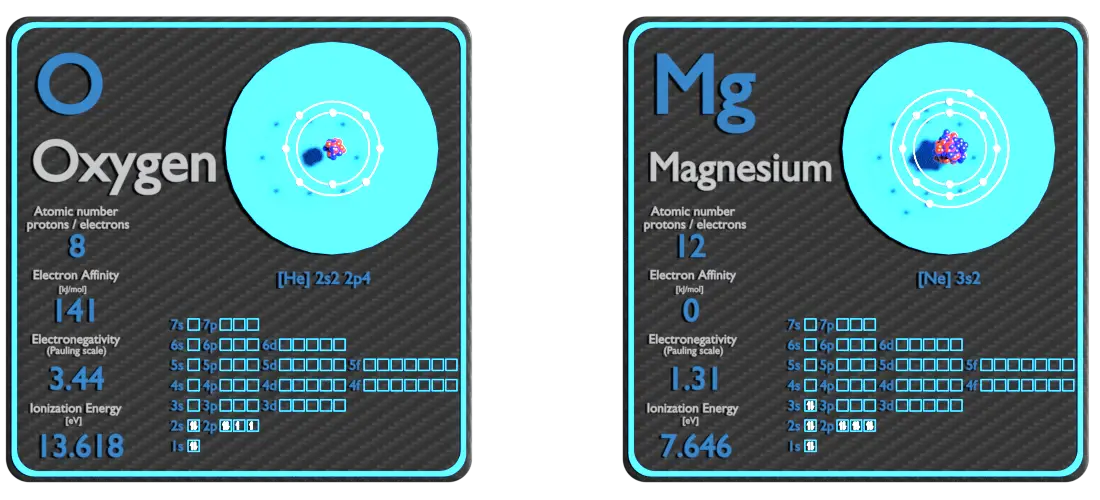
Oxygen and Magnesium – About Elements

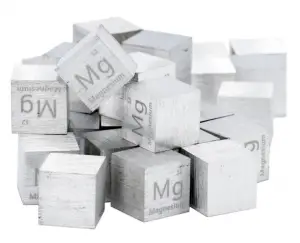
Source: www.luciteria.com
Oxygen and Magnesium – Applications
Oxygen
Common uses of oxygen include production of steel, plastics and textiles, brazing, welding and cutting of steels and other metals, rocket propellant, oxygen therapy, and life support systems in aircraft, submarines, spaceflight and diving. Smelting of iron ore into steel consumes 55% of commercially produced oxygen. In this process, oxygen is injected through a high-pressure lance into molten iron, which removes sulfur impurities and excess carbon as the respective oxides, sulfur dioxide and carbon dioxide. Uptake of oxygen from the air is the essential purpose of respiration, so oxygen supplementation is used in medicine. Treatment not only increases oxygen levels in the patient’s blood, but has the secondary effect of decreasing resistance to blood flow in many types of diseased lungs, easing work load on the heart.
Magnesium
Magnesium is the third-most-commonly-used structural metal, following iron and aluminium.[35] The main applications of magnesium are, in order: aluminium alloys, die-casting (alloyed with zinc), removing sulfur in the production of iron and steel, and the production of titanium in the Kroll process. Magnesium alloys are used in a wide variety of structural and nonstructural applications. Structural applications include automotive, industrial, materials-handling, commercial, and aerospace equipment. Magnesium alloys are used for parts that operate at high speeds and thus must be light weight to minimize inertial forces. Commercial applications include hand-held tools, laptops, luggage, and ladders, automobiles (e.g., steering wheels and columns, seat frames, transmission cases). Magnox (alloy), whose name is an abbreviation for “magnesium non-oxidizing”, is 99% magnesium and 1% aluminum, and is used in the cladding of fuel rods in magnox nuclear power reactors.
Oxygen and Magnesium – Comparison in Table
| Element | Oxygen | Magnesium |
| Density | 0.00125 g/cm3 | 1.738 g/cm3 |
| Ultimate Tensile Strength | N/A | 200 MPa |
| Yield Strength | N/A | N/A |
| Young’s Modulus of Elasticity | N/A | 45 GPa |
| Mohs Scale | N/A | 2.5 |
| Brinell Hardness | N/A | 260 MPa |
| Vickers Hardness | N/A | N/A |
| Melting Point | -209.9 °C | 649 °C |
| Boiling Point | -195.8 °C | 1090 °C |
| Thermal Conductivity | 0.02598 W/mK | 156 W/mK |
| Thermal Expansion Coefficient | N/A | 24.8 µm/mK |
| Specific Heat | 1.04 J/g K | 1.02 J/g K |
| Heat of Fusion | (N2) 0.7204 kJ/mol | 8.954 kJ/mol |
| Heat of Vaporization | (N2) 5.56 kJ/mol | 127.4 kJ/mol |




